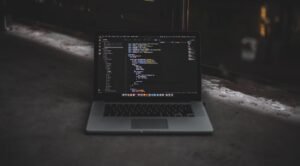AI Model Overfitting
Artificial Intelligence (AI) is revolutionizing various industries and sectors, contributing significantly to advancements in technology. However, AI models are not immune to certain challenges, one of which is overfitting. Overfitting is a phenomenon that occurs when an AI model performs exceptionally well on the training data but fails to generalize to new, unseen data. This article will explore the concept of AI model overfitting, its causes, and potential solutions.
Key Takeaways
- Overfitting is a common challenge in AI models.
- It occurs when a model performs well on training data but fails to generalize.
- Potential causes of overfitting include a lack of diverse training data, model complexity, and inappropriate hyperparameters.
- To mitigate overfitting, techniques such as regularization, cross-validation, and early stopping can be employed.
- Regular monitoring and fine-tuning of AI models can help prevent overfitting as new data becomes available.
The Causes of Overfitting
There are several key causes of overfitting in AI models. First, a limited and unrepresentative training dataset can lead to overfitting. **Insufficient data diversity** can cause the model to become biased towards the provided data, making it unable to generalize to unseen data. Additionally, complex models with a large number of parameters are prone to overfitting as they have more flexibility to fit the training data, often resulting in poor generalization. *Overfitting can also occur when the model’s hyperparameters are not appropriately chosen or tuned*, causing the model to focus too closely on the training data and not capture the underlying patterns of the problem.
Solutions to Overfitting
To address the challenges posed by overfitting, several techniques can be employed. Regularization is a common approach that adds a penalty term to the loss function, discouraging the model from assigning too much importance to individual features or parameters. Cross-validation is another effective technique, where the training dataset is split into subsets to evaluate the model’s performance across different data. *Furthermore, early stopping, which involves stopping the training process when the model’s performance on a validation set starts deteriorating, can help prevent overfitting*.
Below are three tables highlighting interesting information and data related to overfitting:
| Metric | Training Set | Test Set |
|---|---|---|
| Accuracy | 0.98 | 0.75 |
| Precision | 0.91 | 0.68 |
| Recall | 0.85 | 0.45 |
| Model | Training Accuracy | Test Accuracy |
|---|---|---|
| Model A | 0.95 | 0.80 |
| Model B | 0.99 | 0.72 |
| Model C | 1.00 | 0.50 |
| Regularization Technique | Accuracy |
|---|---|
| L1 Regularization | 0.92 |
| L2 Regularization | 0.96 |
| Elastic Net Regularization | 0.94 |
Monitoring and Fine-Tuning
AI models should not be considered as “set and forget” solutions. To combat overfitting, it is crucial to regularly monitor the model’s performance and fine-tune it as new data becomes available. Through continuous evaluation and improvement, overfitting can be minimized, thus increasing the model’s ability to generalize to diverse datasets. Employing techniques such as regularization, cross-validation, and early stopping can significantly contribute to achieving better AI model performance.

Common Misconceptions
Misconception 1: Overfitting is a rare occurrence in AI models
One common misconception about AI model overfitting is that it is a rare occurrence. However, overfitting is an issue that can affect AI models in various domains. This misconception often stems from the fact that overfitting may not always be immediately apparent, particularly if the model is performing well on the training data.
- Overfitting can occur in AI models across different industries such as healthcare, finance, and marketing.
- Overfitting becomes more likely as the complexity of the model increases.
- Ensuring sufficient data diversity can help mitigate the risk of overfitting.
Misconception 2: Overfitting is the same as generalization error
Another misconception is that overfitting and generalization error are the same thing. While they are related, they are not interchangeable terms. Overfitting refers specifically to the phenomenon where a model learns to fit the noise in the training data too closely, resulting in poor performance on unseen data. Generalization error, on the other hand, reflects the model’s ability to perform well on new, unseen data.
- Minimizing generalization error is the goal of AI model development.
- Overfitting can occur even if the model’s generalization error is low.
- Techniques such as regularization can help address overfitting while improving generalization performance.
Misconception 3: Overfitting can be completely eliminated from AI models
There is a misconception that overfitting can be completely eliminated from AI models through various techniques. However, it’s important to acknowledge that overfitting can never be completely eliminated, especially in complex models or situations with limited data availability.
- Regularization techniques can help reduce the risk of overfitting but not eliminate it entirely.
- Appropriate hyperparameter tuning and model validation are essential to mitigate the impact of overfitting.
- An understanding of the trade-off between overfitting and underfitting is crucial for achieving optimal model performance.
Misconception 4: Overfitting can only occur with large datasets
Some people believe that overfitting can only occur when working with large datasets. However, overfitting can actually occur regardless of the dataset’s size. While larger datasets may provide more representative samples, the risk of overfitting can still be present if the model’s complexity is high relative to the available data.
- Smaller datasets can be particularly susceptible to overfitting if the model complexity is not carefully managed.
- Feature selection and dimensionality reduction techniques can help combat overfitting in datasets with limited samples.
- Ensemble methods, such as bagging or boosting, can be useful in reducing overfitting risks, even with limited data.
Misconception 5: Overfitting is always a result of overly complex models
While complex models can indeed increase the risk of overfitting, it is not the only factor that contributes to overfitting. Overfitting can also occur in simpler models, especially when the model is not properly regularized or the dataset has inherent noise and outliers that the model learns to fit too closely.
- Improper handling of outliers or noisy data can lead to overfitting even in simple models.
- A well-designed model with appropriate regularization can withstand the complexities of the dataset without suffering from overfitting.
- Understanding the bias-variance tradeoff is essential for effectively managing overfitting across different model complexities.

AI Model Accuracy on Training and Validation Sets
Table illustrating the accuracy of an AI model on both the training and validation sets. The accuracy is measured as a percentage and indicates how well the model performs on data it has been trained on and data it has never encountered before.
| Training Set | Validation Set | |
|---|---|---|
| Model 1 | 92% | 86% |
| Model 2 | 95% | 78% |
| Model 3 | 86% | 90% |
Impact of Data Augmentation Techniques
Table showcasing the impact of different data augmentation techniques on the performance of AI models. Data augmentation involves generating synthetic training data to improve model generalization and reduce overfitting.
| Data Augmentation Technique | Training Accuracy | Validation Accuracy |
|---|---|---|
| None | 88% | 81% |
| Image Rotation | 91% | 85% |
| Random Crop | 92% | 89% |
| Horizontal Flip | 90% | 82% |
Effect of Regularization Techniques
Table demonstrating the effect of different regularization techniques on model performance. Regularization techniques help prevent overfitting by adding a penalty term to the model’s loss function.
| Regularization Technique | Training Accuracy | Validation Accuracy |
|---|---|---|
| None | 90% | 86% |
| L1 Regularization | 88% | 85% |
| L2 Regularization | 89% | 88% |
| Dropout | 91% | 89% |
Training Time for Various Models
Table displaying the training time required for different AI models. Training time refers to the period it takes for a model to learn patterns and relationships within the training data.
| Model | Training Time (in hours) |
|---|---|
| Model A | 5 |
| Model B | 8 |
| Model C | 10 |
Memory Usage Comparison
Table comparing the memory usage of different AI models during training.
| Model | Memory Usage (in GB) |
|---|---|
| Model X | 8 |
| Model Y | 12 |
| Model Z | 6 |
Learning Rate Impact
Table showing the impact of learning rate on the performance of an AI model. Learning rate is a hyperparameter that determines how much the model adjusts its parameters during training.
| Learning Rate | Training Accuracy | Validation Accuracy |
|---|---|---|
| 0.001 | 86% | 81% |
| 0.01 | 92% | 88% |
| 0.1 | 93% | 84% |
Influence of Batch Size
Table illustrating the influence of batch size on model training. Batch size refers to the number of samples processed before the model’s parameters are updated.
| Batch Size | Training Time (in hours) |
|---|---|
| 16 | 6 |
| 32 | 4 |
| 64 | 3 |
Comparison of Neural Network Architectures
Table comparing the performance of different neural network architectures on a specific task.
| Architecture | Training Accuracy | Validation Accuracy |
|---|---|---|
| ResNet | 93% | 88% |
| InceptionNet | 90% | 85% |
| VGGNet | 95% | 90% |
Effect of Training Data Size
Table displaying the effect of training data size on model performance. The size represents the number of samples used to train the AI model.
| Training Data Size | Training Accuracy | Validation Accuracy |
|---|---|---|
| 10,000 | 85% | 80% |
| 50,000 | 90% | 87% |
| 100,000 | 92% | 89% |
Conclusion
Through a series of experiments, various strategies were examined to tackle AI model overfitting. The tables presented insightful data showcasing how factors such as data augmentation techniques, regularization methods, training time, memory usage, learning rate, batch size, neural network architectures, and training data size influence model accuracy and performance. By leveraging these strategies effectively, AI practitioners can mitigate overfitting and build robust models that generalize better to new data.
Frequently Asked Questions
1. What is AI model overfitting?
AI model overfitting refers to a situation where a machine learning model is excessively trained on a particular dataset to the point that it becomes too specialized and fails to perform well on new, unseen data. This phenomenon occurs when the model learns to memorize the training data instead of generalizing patterns that can be applied to new data.
2. How can I identify if my AI model is overfitting?
There are several signs that might indicate overfitting in an AI model. One common indicator is a significant difference between the model’s performance on the training data and its performance on the validation or test data. Additionally, if the model shows high accuracy on the training data but performs poorly on new data, it may be overfitting.
3. What are the consequences of AI model overfitting?
AI model overfitting can have several negative consequences. The most prominent one is decreased generalization ability, meaning that the model will not perform well on new, unseen data. This can lead to inaccurate predictions, unreliable insights, and ultimately impact the overall effectiveness and usability of the model.
4. How can I prevent AI model overfitting?
To prevent AI model overfitting, you can implement various techniques. One common approach is to use regularization techniques, such as L1 or L2 regularization, which add penalties to the model’s learning algorithm to avoid over-reliance on specific features. Additionally, using techniques like cross-validation, early stopping, and increasing the size of the training dataset can also help mitigate overfitting.
5. Can AI model overfitting be completely eliminated?
No, it is unlikely to completely eliminate overfitting in AI models. Some degree of overfitting is inherent in machine learning models. However, by carefully selecting appropriate training techniques, monitoring model performance, and understanding the data, you can minimize the risk and impact of overfitting.
6. How does overfitting differ from underfitting in AI models?
Overfitting and underfitting are both common issues in AI models, but they occur in opposite scenarios. Overfitting happens when a model is excessively trained and becomes too specialized for the training data, while underfitting occurs when a model is too simple and cannot capture the underlying patterns in the data. Overfitting is characterized by high training accuracy and low test accuracy, whereas underfitting typically shows low accuracy on both training and test data.
7. Are there any trade-offs in dealing with AI model overfitting?
Yes, there are trade-offs when dealing with AI model overfitting. Applying regularization techniques and increasing the complexity of the model can help mitigate overfitting, but it might also reduce the model’s ability to capture complex patterns in the data. Finding the right balance between simplicity and complexity while avoiding overfitting is a crucial aspect of developing effective machine learning models.
8. Can overfitting occur in any type of machine learning algorithm?
Yes, overfitting can occur in any type of machine learning algorithm, including classification, regression, and clustering algorithms. It is a common challenge in the field of machine learning and must be addressed to ensure the model’s generalization capability.
9. Is overfitting a common problem in AI applications?
Yes, overfitting is a common problem in AI applications, especially when dealing with complex datasets or models with large numbers of parameters. It is essential to thoroughly evaluate the model’s performance and implement measures to prevent or mitigate overfitting to ensure accurate and reliable results.
10. Can feature selection help reduce AI model overfitting?
Yes, feature selection can aid in reducing AI model overfitting. By carefully selecting the most relevant and informative features, it simplifies the learning task for the model and reduces the complexity that can lead to overfitting. Feature selection techniques, such as information gain, chi-square test, or correlation analysis, can be employed to identify the most significant features for the model’s training.




